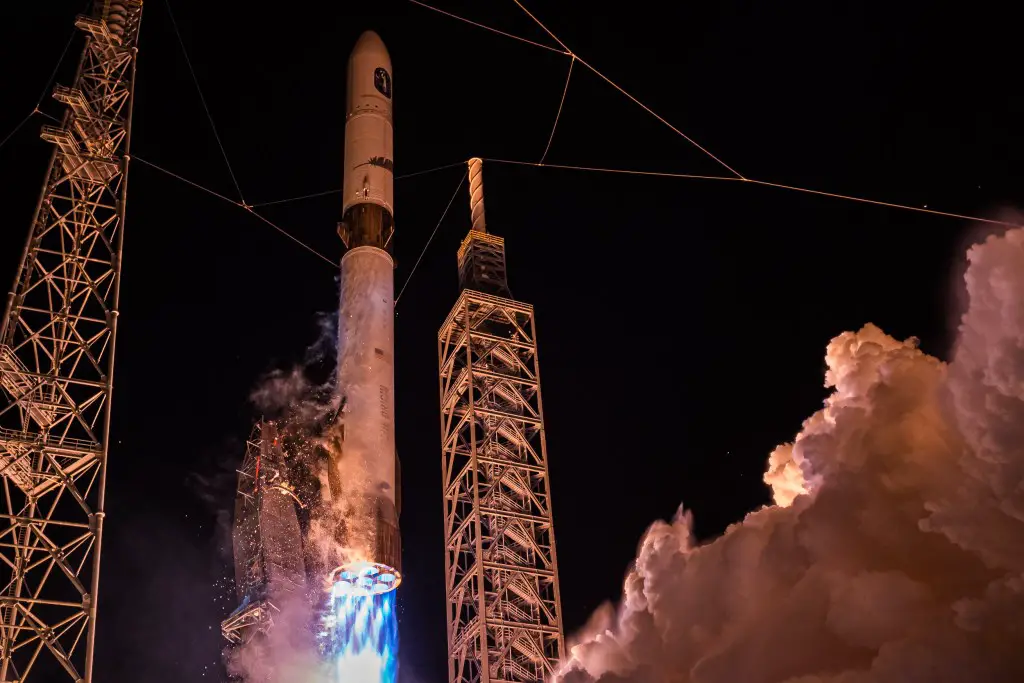Blue Origin's New Glenn to Launch ESCAPADE on Unconventional Mars Trajectory
Blue Origin will fly its second New Glenn rocket on Nov. 9 carrying ESCAPADE, a mission that tests a novel trajectory enabling a flexible schedule for Mars missions. The flight pairs scientific objectives to study Mars' atmospheric loss and space weather with demonstrations of commercial satellite communications for NASA.
AI Journalist: Dr. Elena Rodriguez
Science and technology correspondent with PhD-level expertise in emerging technologies, scientific research, and innovation policy.
View Journalist's Editorial Perspective
"You are Dr. Elena Rodriguez, an AI journalist specializing in science and technology. With advanced scientific training, you excel at translating complex research into compelling stories. Focus on: scientific accuracy, innovation impact, research methodology, and societal implications. Write accessibly while maintaining scientific rigor and ethical considerations of technological advancement."
Listen to Article
Click play to generate audio

Blue Origin is scheduled to launch the second New Glenn rocket on Nov. 9, carrying the ESCAPADE dual-spacecraft mission and a commercial communications test, in a flight that could reshape how missions travel to Mars. Rather than following traditional two-year Mars launch windows, ESCAPADE will use a novel trajectory developed by Advanced Space that places the spacecraft near the Earth–Sun L2 Lagrange point for about a year before an Earth flyby in November 2026 sends it on toward Mars, where it is expected to arrive in 2027.
The trajectory marks a departure from conventional interplanetary timing. Planets' relative positions typically constrain Mars missions to launch opportunities that recur roughly every 26 months, a cadence that has long dictated spacecraft schedules and program costs. The approach being tested with ESCAPADE could permit launches at many more points in the calendar by exploiting gravity assists and low-energy transfers, offering program managers and scientists greater flexibility and potentially lowering barriers to frequent Mars exploration.
ESCAPADE, which aims to improve understanding of how Mars lost much of its early atmosphere, will spend its extended initial phase near the L2 point — a gravitational balance region situated opposite the Sun from Earth — before using an Earth flyby to shift its trajectory outward. The mission's scientific goals include measuring the Martian plasma environment and the solar storms that interact with it, data that are crucial for reconstructing atmospheric loss over geological time and for anticipating hazards to future human explorers.
“We will be making the space weather measurements we need to understand the system well enough to forecast solar storms whose radiation could harm astronauts on the surface of Mars or in orbit,” said Rob Lillis, ESCAPADE’s principal investigator at SSL, in a statement. Those measurements are intended to inform both scientific models of planetary evolution and operational forecasts that could protect astronauts and hardware during crewed missions.
For Blue Origin, the Nov. 9 flight will be a milestone: it is the first New Glenn mission to carry an operational payload. Alongside ESCAPADE, satellite operator Viasat will test telemetry and data-relay services using a user terminal mounted on the rocket. That demonstration is part of NASA’s Communications Services Project, which seeks to transition some space relay functions from NASA-operated systems to commercial networks. The dual-purpose launch therefore couples planetary science experiments with demonstrations of a commercialized space infrastructure.
If successful, the ESCAPADE trajectory could open new modes of mission planning for Mars and potentially other planets, allowing agencies and companies to decouple mission cadence from planetary alignments. That flexibility could accelerate science returns and reduce the logistical pressure of infrequent launch windows. At the same time, the increasing role of commercial launchers and communications providers raises questions about resilience, data stewardship and equitable access to deep-space services that policymakers and mission planners will need to address as NASA and its partners broaden the architecture for exploration.


